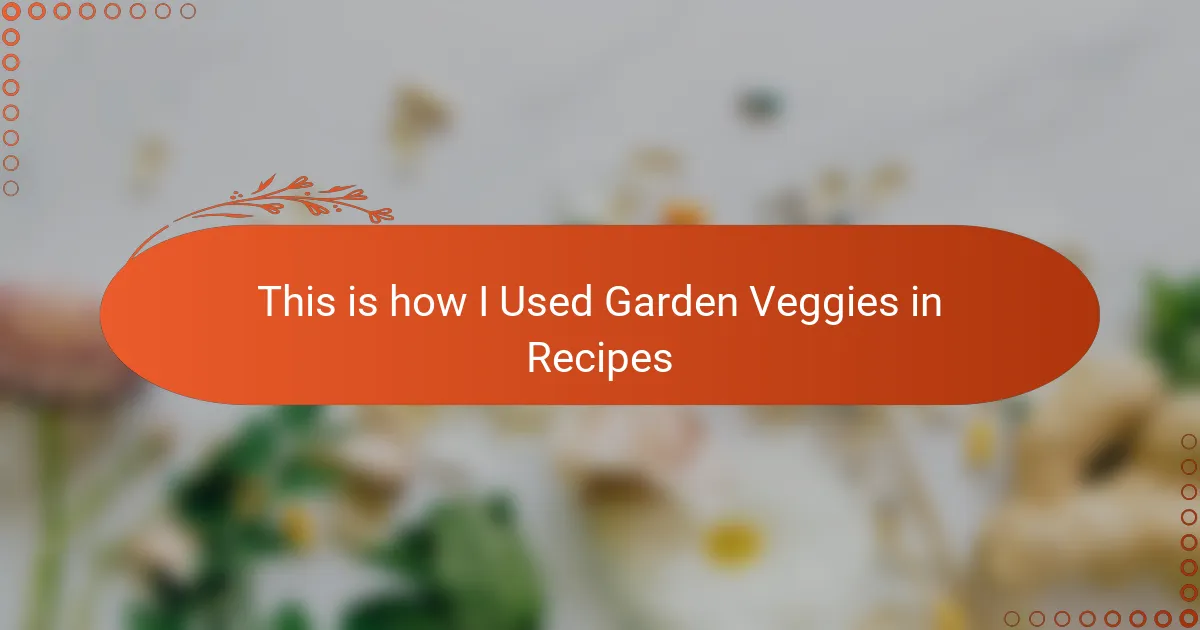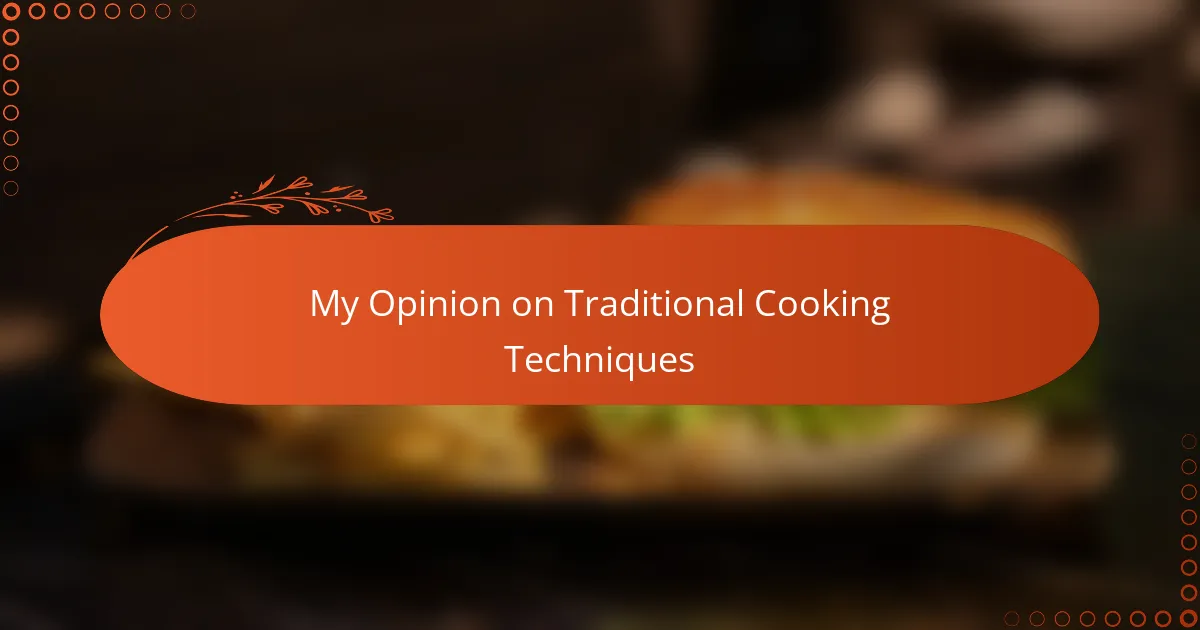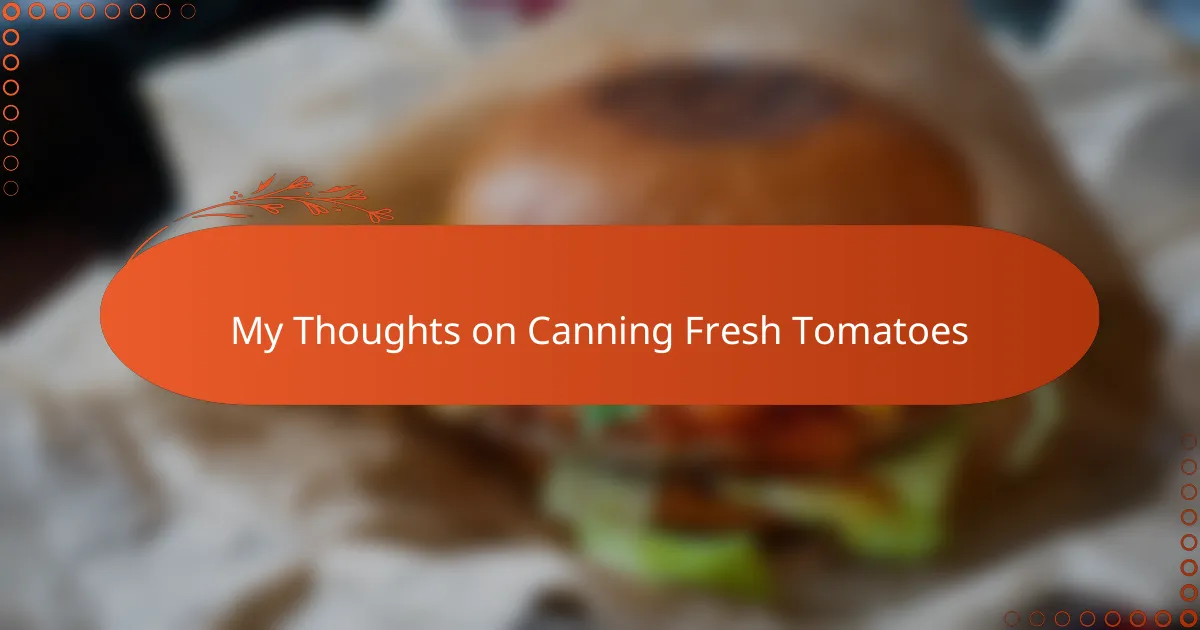Key takeaways
- Homesteading cooking emphasizes simplicity, resourcefulness, and connection to seasonal ingredients, enhancing the meaning of meals.
- Choosing garden vegetables involves trusting your senses, valuing freshness and flavor over appearance, and celebrating their unique characteristics.
- Preparing vegetables is a mindful ritual that influences the dish’s outcome, allowing for creativity and personal touches in cooking.
- Preserving harvested vegetables promptly, through methods like freezing and pickling, helps maintain their quality and extend their enjoyment throughout the year.
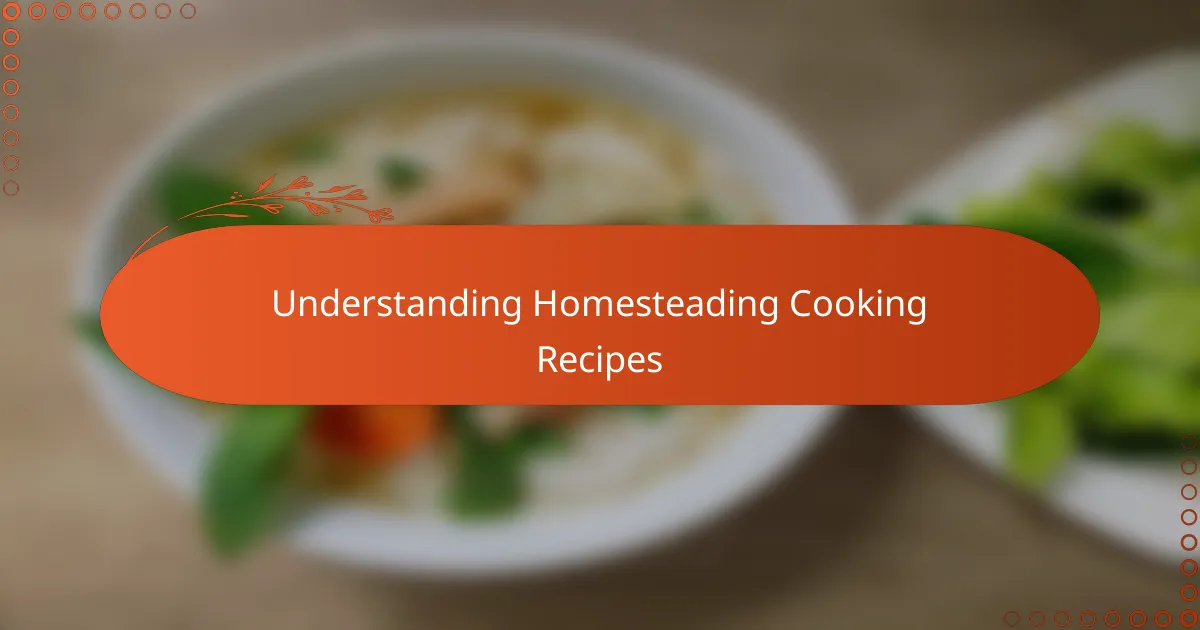
Understanding Homesteading Cooking Recipes
Homesteading cooking recipes are more than just instructions; they’re a reflection of a lifestyle deeply rooted in self-reliance and connection to the land. When I first started, I realized these recipes often celebrate seasonal, homegrown ingredients, which made each meal feel more meaningful. Have you ever noticed how cooking with freshly harvested vegetables somehow tastes richer—almost like it carries a story from your garden to your plate?
What struck me most is how these recipes embrace simplicity and resourcefulness. Instead of using fancy or rare ingredients, they focus on making the most out of what nature provides. This mindset changes the approach to cooking; it’s less about perfection and more about creativity and gratitude. It’s like each dish tells a chapter of your homestead’s journey.
Understanding homesteading recipes also means appreciating the history and traditions behind them. Many come from generations that lived closely with the land, teaching us valuable lessons about patience and sustainability. I find myself feeling connected to those past cooks every time I stir a pot of homemade vegetable stew, wondering how they managed to turn humble ingredients into something so nourishing.
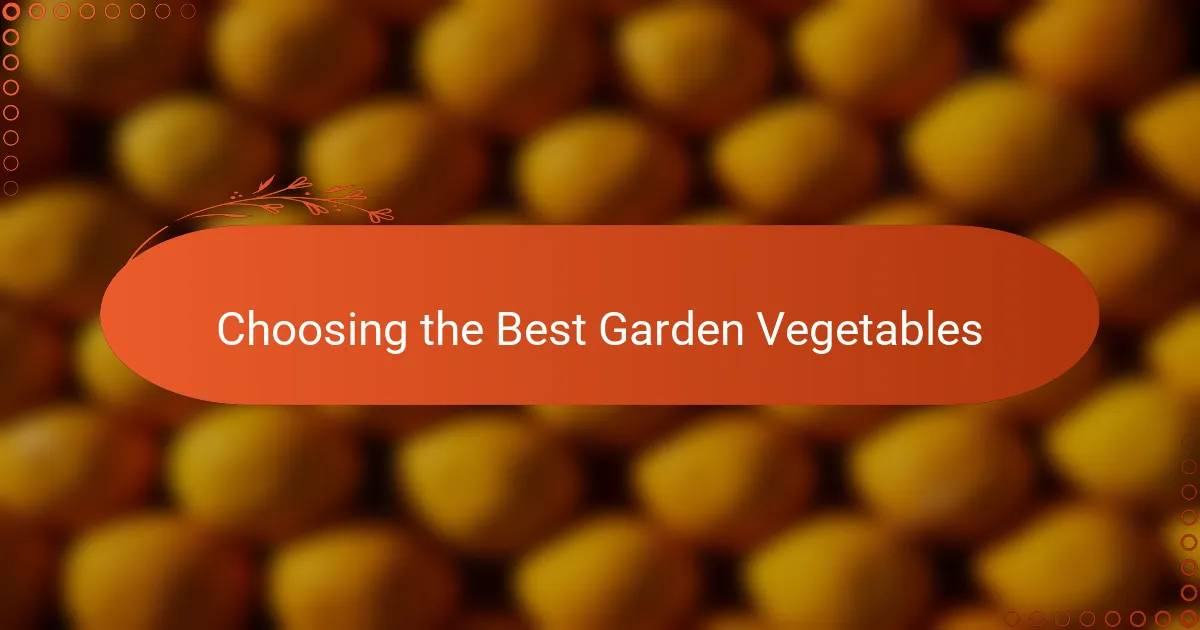
Choosing the Best Garden Vegetables
Choosing the right vegetables from my garden feels like picking treasures. I’ve learned to look for vibrant colors and firm textures because those signs tell me the veggies are at their peak flavor. Don’t you find that a crisp carrot or a deep green kale just invites you to cook with more enthusiasm?
Sometimes, I stumble upon a zucchini that’s a bit oversized but still fresh, and I remind myself that size isn’t everything—freshness and flavor matter most. It’s these moments that make me appreciate how garden veggies don’t follow supermarket standards; they have character and personality. Have you ever noticed how your dishes taste different when you use vegetables chosen straight from your own patch?
One thing I always check is the smell—if a tomato or cucumber smells fresh and earthy, that’s a sure sign it’s perfect for my recipes. I think trusting your senses, rather than just looks, connects you more deeply to your garden’s bounty. After all, choosing the best garden vegetables is as much about intuition as it is about eyesight.
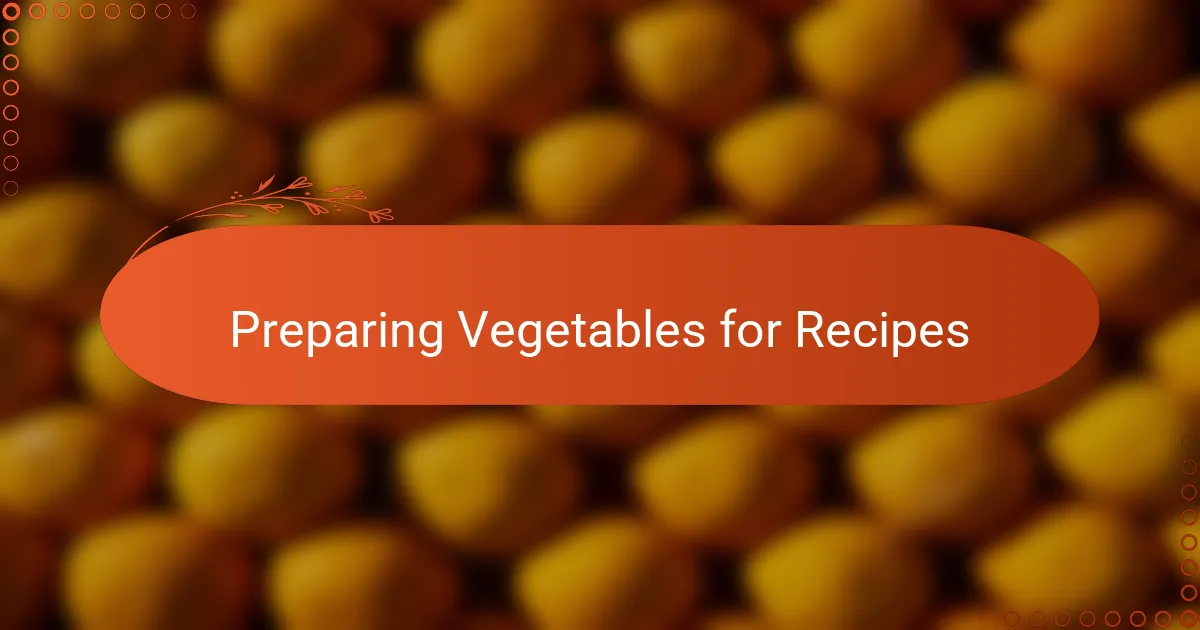
Preparing Vegetables for Recipes
Preparing vegetables for recipes is a ritual I truly enjoy, almost like a quiet moment to connect with what I’ve harvested. I always start by washing everything gently—clean soil and tiny bugs remind me of the garden’s freshness, but I want my food pure and ready. Have you ever noticed how peeling a carrot or trimming the ends of green beans can be oddly satisfying, almost therapeutic?
Cutting vegetables to the right size for a recipe might seem straightforward, but I’ve found it changes the whole dish. For example, slicing cherry tomatoes in halves releases their sweet juices, making sauces richer without extra effort. When I prepare kale, I tear it by hand instead of chopping; it feels more natural and keeps the leaves tender.
Sometimes, I experiment with keeping the skins on or off, depending on the veggie and the meal. My courgettes often stay unpeeled to keep that subtle bitterness and extra nutrients. Does it make a difference? I believe it does—those little details bring a personal touch that supermarket veggies just can’t match. Preparing garden vegetables is more than a step; it’s the beginning of a story on the plate.
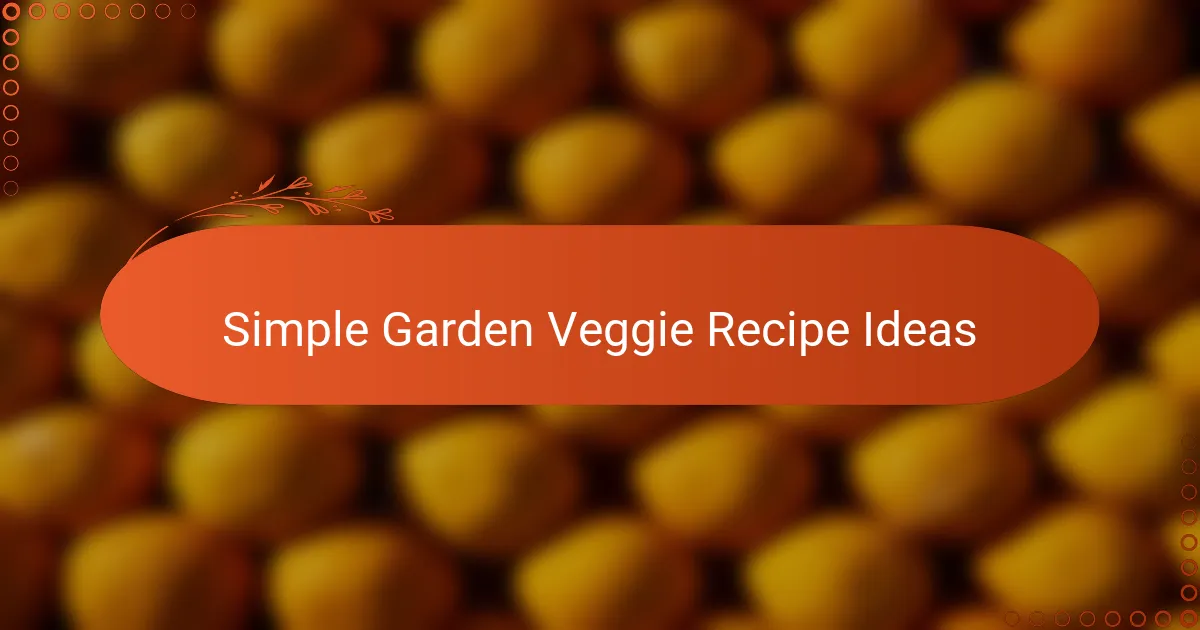
Simple Garden Veggie Recipe Ideas
There’s something wonderfully simple about tossing fresh garden tomatoes and basil into a warm skillet with garlic and olive oil. I often make this quick sauté when I want a burst of summer on my plate, and it reminds me how just a handful of ingredients can create something deeply satisfying. Have you ever tried drizzling that golden, garlicky tomato mixture over toasted bread? It feels like a small celebration of your garden’s best.
Another favorite that comes to mind is roasting chopped root vegetables like carrots, beets, and parsnips with a sprinkle of rosemary and sea salt. The oven does most of the work, turning earthy flavors into caramelized bites that melt in your mouth. Honestly, it’s my go-to when I’m short on time but still want a dish that honors the garden’s harvest. Do you find that roasting brings out a sweetness in veggies you didn’t expect?
I also love a simple stir-fry using zucchini, peppers, and onions—quick, colorful, and packed with flavor. This is my favorite way to use slightly oversized or imperfect veggies that might otherwise go to waste. Watching the veggies sizzle and soften while filling the kitchen with their fresh aroma is a small moment of joy I cherish. Have you noticed how a simple stir-fry can turn everyday garden scraps into a vibrant meal?
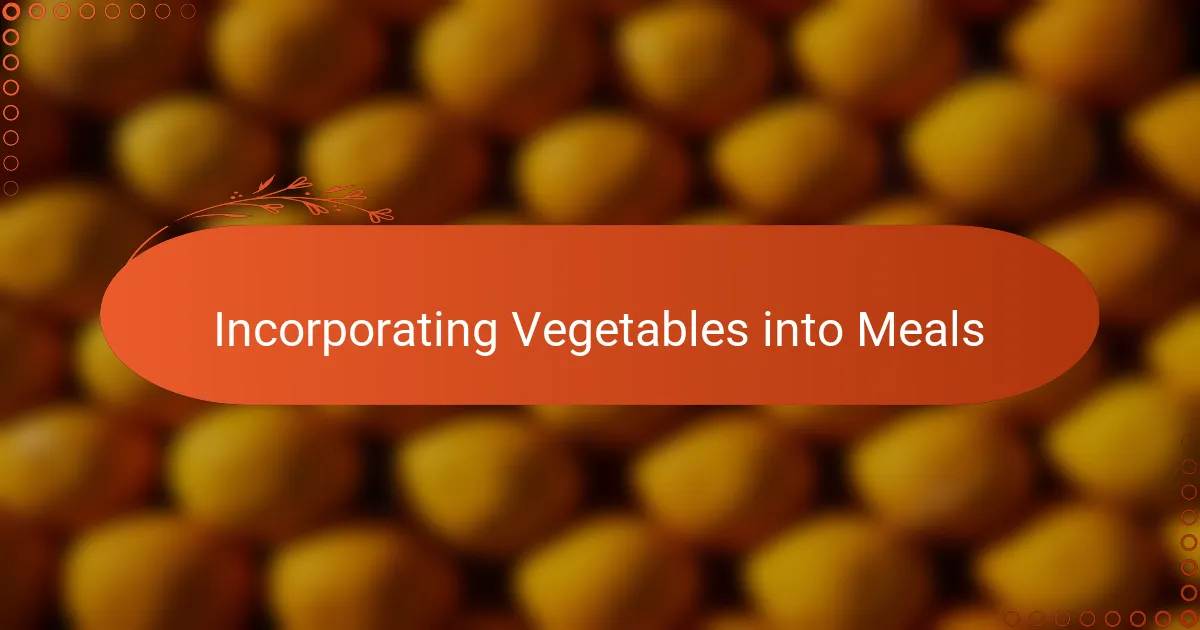
Incorporating Vegetables into Meals
Incorporating vegetables into meals has become a personal adventure for me. I often find myself sneaking extra greens into dishes where you least expect them—like blending spinach into a creamy pasta sauce or stirring shredded carrots into meatballs. Have you ever been surprised by how seamlessly veggies can elevate a dish when you think outside the box?
What I love most is the flexibility vegetables offer. Sometimes, I throw in a handful of chopped garden herbs and diced tomatoes into a simple soup, and it suddenly tastes like a celebration of the season. It’s moments like these that remind me how garden veggies turn even the plainest meals into something special. Don’t you think fresh ingredients have a magic all their own?
There’s also a comforting rhythm to mixing vegetables into daily meals. When I add roasted squash or crisp green beans alongside dinner, it feels like I’m nourishing more than just my body—it’s a small ritual of gratitude for the garden’s gifts. Have you noticed how meals with garden veggies often come with a side of satisfaction that goes beyond flavor?
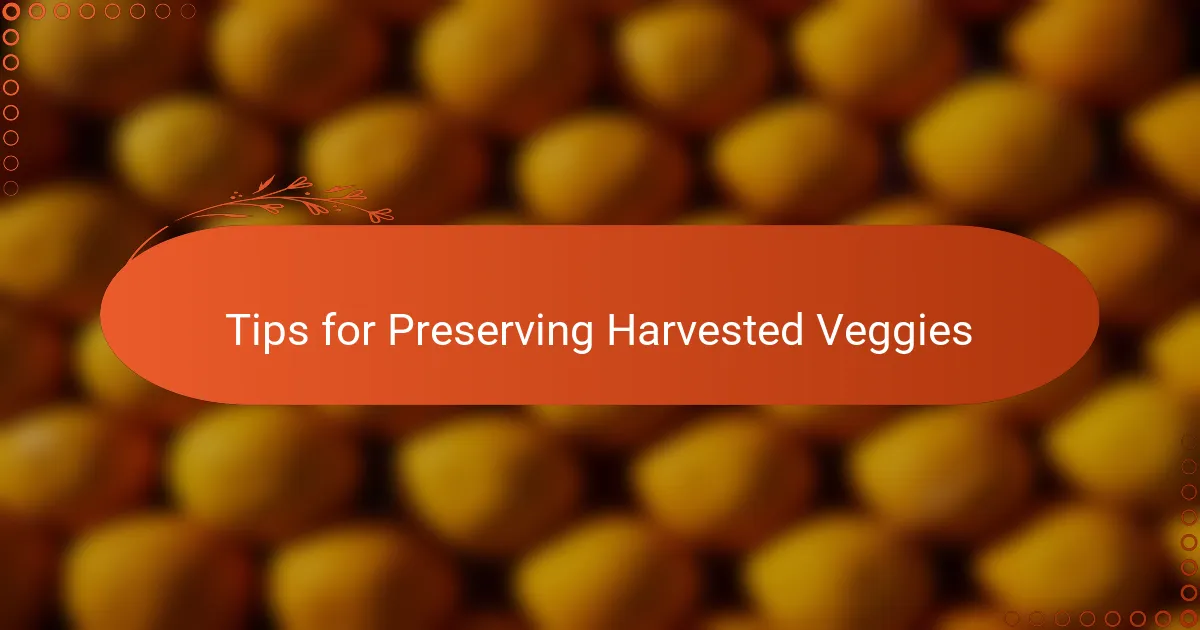
Tips for Preserving Harvested Veggies
One thing I’ve learned about preserving garden veggies is to act quickly after harvest—freshness fades fast, and that little window makes all the difference. I remember leaving my green beans in the fridge too long once, and by the time I cooked them, they’d lost their snap and flavor. Have you ever experienced how just a day or two can change a vegetable’s texture entirely? That’s why I try to process or preserve them the same day, whether by freezing, pickling, or drying.
Freezing is my go-to for many veggies, but I always blanch them first—it’s a quick steam or boil that stops enzyme activity to keep color, texture, and nutrients intact. I used to skip this step and noticed my spinach turned into a sad, mushy mess. Trust me, this small extra effort pays off when you thaw those vibrant greens later and they taste almost fresh. What preservation methods work best in your kitchen? For me, it depends on the vegetable and how I plan to use it down the line.
Sometimes, I like to get creative with pickling, especially for cucumbers and radishes. It feels like bottling the summer sun and storing a tangy bite of the garden for rainy days ahead. There’s something deeply satisfying about opening a jar of crunchy, homemade pickles in the dead of winter—it’s like a little celebration of hard work and patience. Have you tried preserving your harvest this way? If not, I’d say give it a shot; it’s easier than you think and makes the garden’s bounty last much longer.
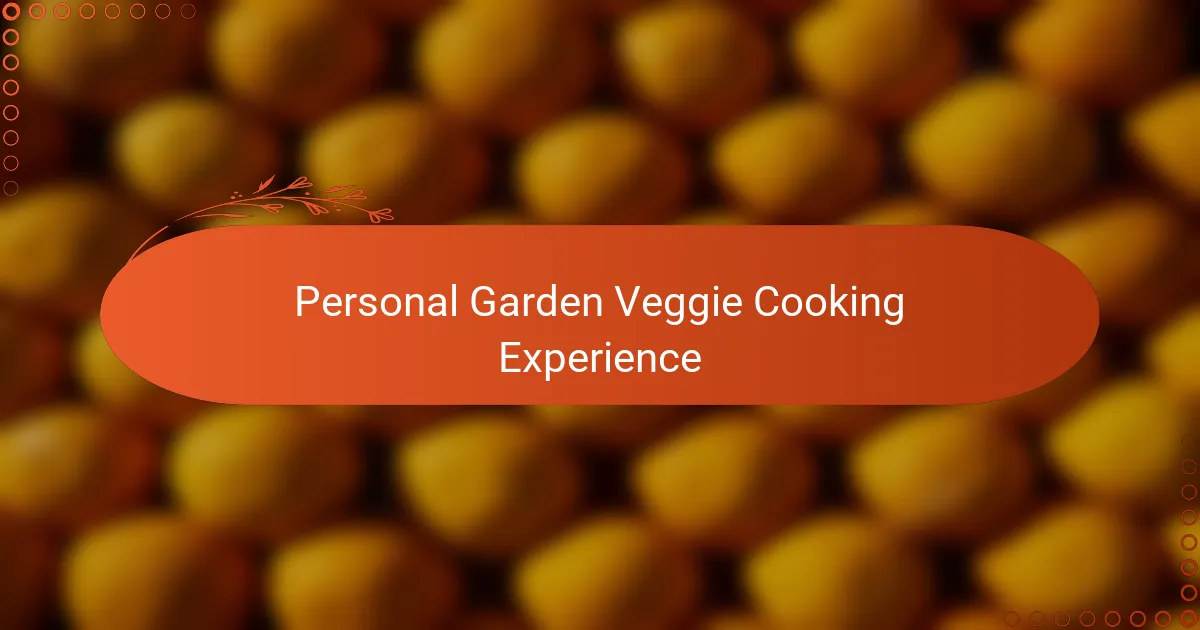
Personal Garden Veggie Cooking Experience
One of my favorite memories is when I first cooked a meal using vegetables picked just minutes before from my garden. There was something incredibly satisfying about biting into a tomato that still held the warmth of the sun and tasting the freshness in every bite. Have you ever noticed how garden veggies carry a flavor that feels alive, as if the earth itself adds a whisper of magic to your dish?
I’ve also found that cooking with garden vegetables makes me more mindful in the kitchen. When slicing onions or stirring a pot of simmering squash soup, I feel connected to the whole growing process—from seed to season to supper. It’s not just about nourishment; it’s about honoring the effort and patience that the garden demands. Doesn’t that give each recipe a little extra meaning?
Sometimes, I experiment by combining vegetables straight from the garden in ways I wouldn’t have considered before. For example, adding freshly chopped basil and zucchini to an omelet gave it an unexpectedly vibrant twist that my family loved. It reminds me that when you cook with garden veggies, you’re inviting creativity into the kitchen without needing fancy ingredients—just a willingness to explore and savor. Have you tried letting your garden inspire your meals in surprising ways?
